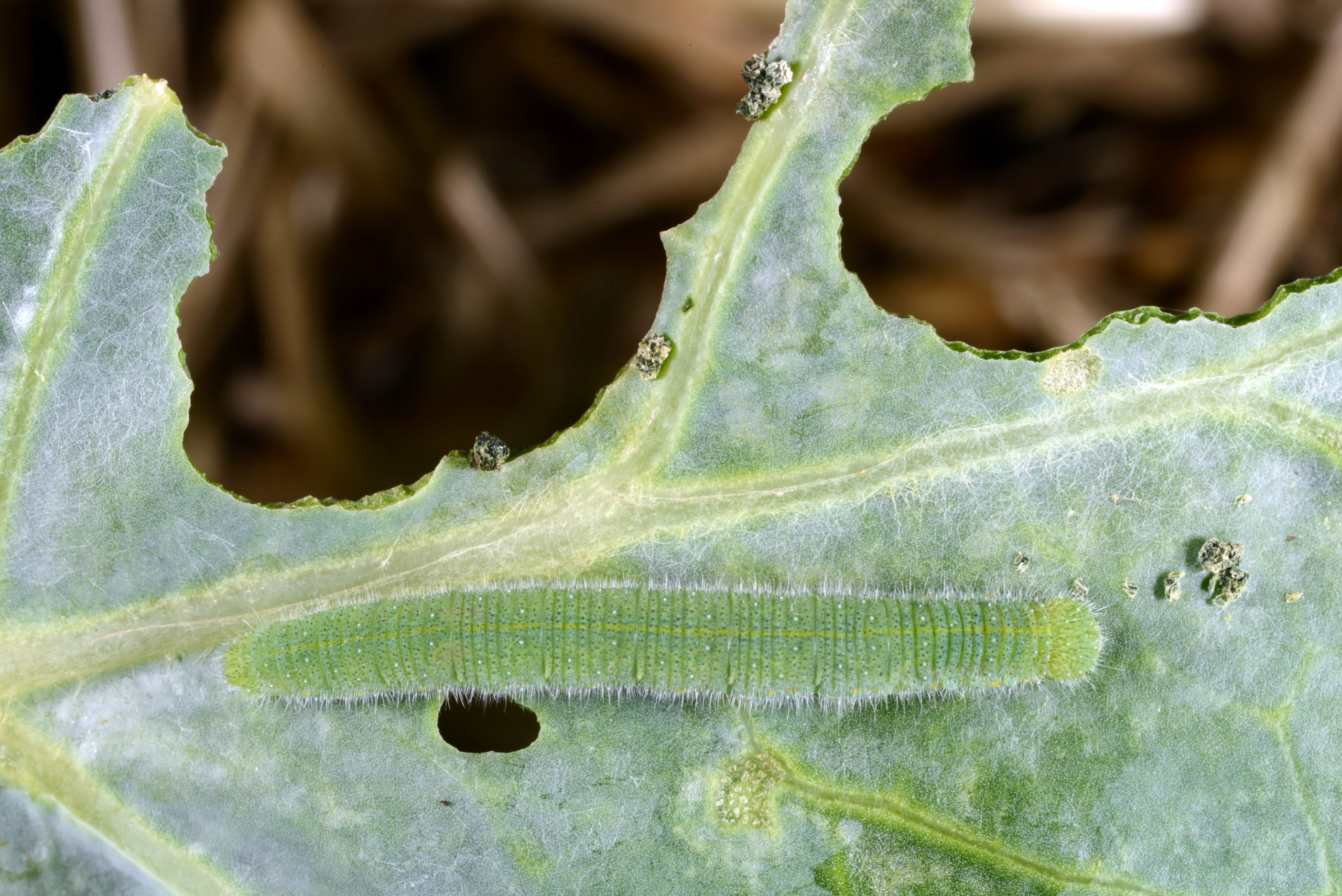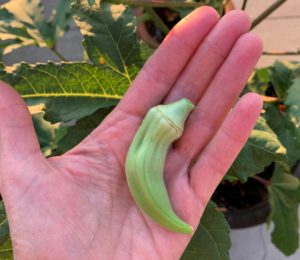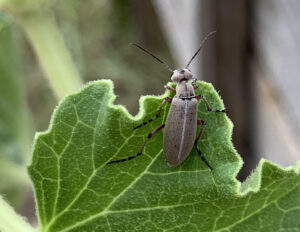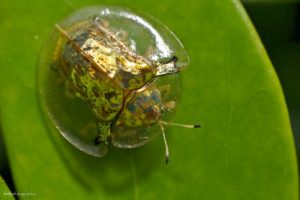Cabbage and related brassicas are the preferred plants for a variety of caterpillars or worms as they are sometimes erroneously referred to. Cabbage loopers, the checkered cabbage white butterfly, and the imported cabbage white butterfly ( both the small white and the large white) are common pests found in gardens. In this post, we will discuss how to identify the small white butterfly, its eggs, and larvae, and how to get rid of them.
The imported cabbage white butterfly, also known as the cabbage moth, cabbage white, and small white, has a wingspan of only about 1.5 inches. Its wings are white to pale yellow, and its forewings have faded black tips. The males have one spot on their forewings, while the females have two. They originally inhabited Europe, Asia, and North Africa, but during the mid-1800’s they were inadvertently imported to Australia, New Zealand, and North America, where they have become common pests.
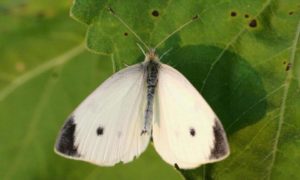
The larvae from the small white cabbage butterfly are referred to as cabbage worms even though they are caterpillars. They are velvet green in color with short fine hairs and five sets of pro-legs (pseudo legs). They measure about 1.25 inches in length and have faint yellow lateral stripes that form in later instars.
The small cabbage white should not be confused with the large cabbage white butterfly. Although the adult butterflies are very similar in their coloring and markings, the large white is slightly larger with more pronounced markings. The real difference between the two, however, is seen in their larvae (caterpillars). The larvae of the large white are yellowish in the beginning, but as they mature, they become black and gray with yellow lateral stripes and black spots. They also have short fine hairs. The female large white butterfly lays her eggs in clusters, whereas the small white butterfly lays single eggs.
Damage
Like other butterflies, the small white feeds on nectar. But don’t let this delicate creature fool you. It may be pretty, but it can wreak havoc in your garden. True to its name, the cabbage white targets cabbage and other members of the brassica family, such as broccoli, Brussels sprouts, cauliflower, turnips, radish, kale, etc. as a haven for its eggs.
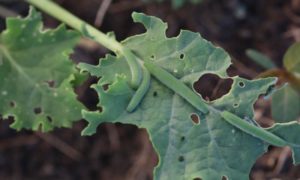
Young larvae tend to feed on the underside of the outer leaves of the cabbage or other related plants, leaving holes with jagged edges. But as they mature, the caterpillars feed more intensely on new growth and will often tunnel into the cabbage head, leaving telltale dark green droppings all over the leaves. The cabbage worm can cause extensive damage in very little time, often devastating entire crops.
Life Cycle
Adult imported cabbage white butterflies (small whites) emerge from their green pupae in the early spring to mate. The females lay up to 200 yellow, single cone-shaped eggs in a lifetime, usually on the underside of leaves where they will be shielded. The larvae will emerge from the eggs in about ten days. They will spend the next two weeks passing through five instars and gorging themselves on cabbage plants or other brassicas in your garden. At the end of this period, they will pupate, generally on the lower leaves of the plant. After another ten days, adult small white butterflies will emerge. This process is repeated between three to five more times, although warmer climates can see as many as eight generations.
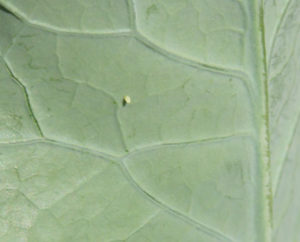
This article contains affiliate links. If you make a purchase using a link, I will receive a very small commission at no additional cost to you, and it will help me maintain this website. Rest assured, I only recommend products I like!
How to Prevent Cabbage Worms
The best way to prevent cabbage worms from taking over your garden is to inspect your plants daily, especially the brassicas, for eggs and larvae. This practice will require diligence, but it will reap great rewards.
Perhaps the most effective way to prevent the butterflies from laying eggs on your plants is to install row covers. They are relatively inexpensive and easy to use. If you grow plants in containers, the covers can easily be adapted and cut to size for a custom fit. In like manner, some have found that placing pantyhose over the cabbage heads when they start to form will protect them from caterpillars that want to bore into the heads. Because the nylon is flexible, it can expand as the cabbage grows.
Another key to preventing cabbage worms is to remove any plant debris from your garden and the surrounding area, as this is where the caterpillars may try to overwinter.
How To Get Rid Of Cabbage Worms
If you discover eggs or cabbage worms in your garden, it is best to simply pick them off the plant and dispose of them. If you have a rather large garden or if the caterpillars are beginning to take over, you may need to implement one or more of the following methods.
Spray an Antifeedant
An antifeedant is a repellant that deters caterpillars from eating the plant. There are a number of homemade solutions. Here are a few you may want to try.
Neem Oil – One of the most common and effective antifeedants used in organic gardens is neem oil. Be sure to choose one that is cold-pressed and contains the naturally occurring chemical called Azadirachtin. This is the neem oil I use.
Here is the DIY recipe that I use. It can be added to a spray bottle for ease of application: Add 1 teaspoon of neem oil, 1/2 teaspoon of a Castile soap like Dr. Bronner’s or Dr. Wood’s, or other chemical-free soap, to 32 ounces of water. Mix well. Do a test spray on one leaf and wait 24 to 48 hours to make sure the mixture is not too strong. If the leaf is damaged, decrease the amount of neem oil. If all went well, spray the plants, making sure to cover both sides of the leaves. Repeat every 7 to 14 days as a preventative measure. If it rains, repeat. If the solution does not seem to be effective, increase the amount of neem oil to as much as 2 teaspoons. Do another test spray. Do not apply during the day as the combination of sun and neem oil can burn the plant. Instead, apply during the cool early morning hours or in the early evening. Continue to monitor for caterpillars and eggs.

“Hot” Spray – Mix spicy organic produce like hot peppers, onions, garlic, peppercorns, and horseradish in a blender along with at least 16 ounces of water. Blend thoroughly. Pour the mixture through a sieve into a spray bottle. Add about one teaspoon of light oil, like avocado oil, and 1 teaspoon of a chemical-free Castile soap like Dr. Bonner’s or Dr. Wood’s. Do a test spray on one leaf to make sure the mixture doesn’t burn the plant. If the mixture is too “hot,” try diluting it. If there is no damage, spray the plant thoroughly. Some recommend spreading the solids that were strained out of the mixture around the base of the plants. Continue to monitor for caterpillars and eggs.
Citrus Spray – Grind an orange or other citrus fruit, including the rind and seeds, in a food processor (you may need to add a bit of water). Soak the blended citrus in two cups of water overnight. Remove the solids by pouring the mixture through a sieve into a spray bottle. Add one teaspoon of a chemical-free Castile soap like Dr. Bonner’s or Dr. Wood’s. Be sure to do a test spray first. Spray the plant thoroughly. Continue to monitor for caterpillars and eggs.
If you use any of the above mentioned sprays, keep in mind that they will deter and possibly harm or kill the beneficial insects as well.
Dust the Plants
Dust the plants with food-grade diatomaceous earth (DE), which is a fine powder-like substance made from fossilized marine life. When a caterpillar or other insect moves across the powder, sharp micro-fragments scrape the tissue causing it to die. For this reason, you may want to wear eye protection and avoid inhaling the powder as it could potentially harm your lungs. Continue to monitor for caterpillars and eggs.
DE can harm bees and other pollinators, so be sure to dust your plants late in the day when they are no longer around and avoid dusting flowers.
You can also dust the plant with equal portions of cornmeal and rye flour. Or use a salt and flour mixture (1 part salt to 2 parts flour). Reportedly, when the cabbage worms eat the “dust,” it will cause bloating, and they will die. This is said to work best if the leaves are damp.
Saltwater Spray
Some report success using a saltwater spray. Mix one tablespoon of salt in a half gallon of water, then pour into a spray bottle. This is one of the sprayers I use for a variety of applications, and here is the other one. The cabbage worms should die in two days because they are said to be sensitive to salt. For this reason, the saltwater will need to be sprayed directly onto the caterpillars (cabbage worms). Continue to monitor for caterpillars and eggs.

Natural Predators
Control cabbage worms by encouraging their natural predators such as wasps, yellow jackets, spiders, green lacewings, ladybugs, and birds to come to your garden by planting species of flowers that appeal to them. If this is the method you are going to use, you’ll need to refrain from using any sprays that will deter or harm these beneficial insects.
If you have chickens and your plants are mature enough to withstand a little pecking, you may want to allow your chickens to pick out any cabbage worms for you.
Now you know how to identify and prevent the destructive small white cabbage worm (caterpillar). If, however, you find them in your garden, it doesn’t have to spell disaster. By implementing one or more of the above methods, you should be able to preserve your plants and reap a harvest.
Thank you for reading this article! If you found it helpful, please considering sharing it via email or social media.
